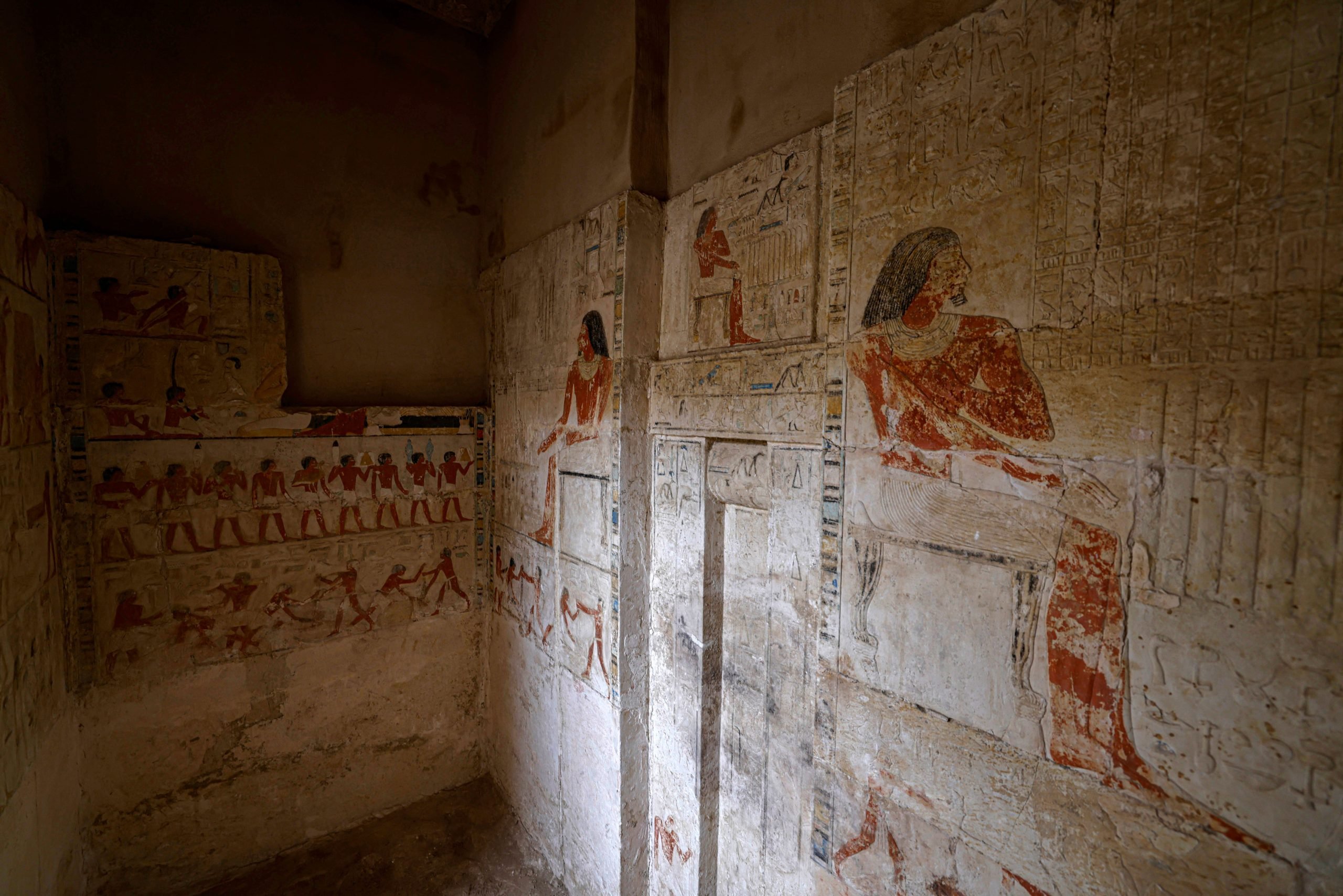
Ongoing excavations at Egypt’s Saqqara necropolis, south of Cairo, have unearthed two mummification workshops and the tombs of two significant priests. The site’s latest treasures, which Egypt’s Ministry of Tourism and Antiquities announced on May 27, paint a fuller picture of the mummification process.
Researchers discovered two of Egypt’s largest known embalming workshops just one year after excavating the goddess Bastet’s sanctuary in Saqqara, where many mummified cats were found buried, and four years after unearthing animals and statues near this very spot, Reuters reported.
Mostafa Waziri of Egypt’s Ministry of Tourism and Antiquities unveiling the finds at a press conference in the Saqqara necropolis on May 27, 2023. Photo by Khaled Desouki / AFP via Getty Images.
The workshops date back to the 30th dynasty (380–343 B.C.E.) and the Ptolemaic era (305–30 B.C.E.) respectively. One measures nearly seven feet-long and two feet-wide, with numerous stone beds that were clearly meant for humans. The other features five stone beds arranged atop mud and stone floors. Early studies indicate that this latter site, based on the size of its beds, was meant for animals.
Gutters line the working surfaces in both workshops. Clay pots for holding entrails turned up alongside ritual vessels and natron salt, an important ingredient in mummification.
People visit the Saqqara region in Giza, Egypt on May 27, 2023. Photo: Fareed Kotb/Anadolu Agency via Getty Images.
Two tombs belonging to identified leaders join the latest crop of discoveries—one belonging to Ne Hesut Ba, a top official and priest during the 5th dynasty, and another, Men Kheber, who served the Late Kingdom’s 18th dynasty. Ne Hesut Ba’s tomb, dated to around 2,400 B.C.E., features imagery of “daily life, agriculture and hunting scenes,” Saqqara site director Mohamed Youssef said. Engraved portraits and an alabaster statue were found amongst Men Kheber’s tomb, dated to 1,400 B.C.E.
Altogether, the four finds complement a set of ceramics found at Saqqara in February featuring engravings and residues scientists used to determine the ancient ingredients for mummification.